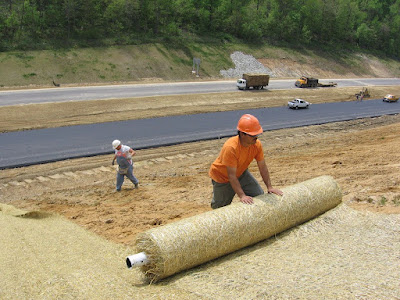Introduction:
Mulching, the practice of covering soil with a protective layer of organic or inorganic material, offers numerous benefits to gardeners and landscapers. However, like any gardening technique, it also has its drawbacks. Understanding both the advantages and disadvantages of mulching can help you make informed decisions about its use in your garden or landscape.
Advantages of Mulching
1. Moisture Retention
One of the primary benefits of mulching is its ability to conserve soil moisture. By covering the soil, mulch reduces water evaporation, helping the soil retain moisture for longer periods. This is particularly beneficial in dry or arid regions where water conservation is crucial. Plants mulched correctly require less frequent watering, leading to significant water savings.
2. Weed Suppression
Mulch acts as a barrier that inhibits the growth of weeds by blocking sunlight. This reduces the need for chemical herbicides and manual weeding, saving time and effort. With fewer weeds competing for nutrients, plants can grow more vigorously.
3. Soil Temperature Regulation
Mulch helps regulate soil temperature by providing insulation. In the summer, it keeps the soil cooler by shielding it from direct sunlight, and in the winter, it acts as a blanket, retaining heat and protecting plant roots from freezing temperatures. This temperature moderation can lead to more consistent and healthier plant growth.
4. Soil Health Improvement
Organic mulches, such as wood chips, straw, or compost, decompose over time, adding organic matter to the soil. This improves soil structure, enhances nutrient availability, and promotes beneficial microbial activity. Healthier soil supports robust plant growth and increases the soil's ability to retain water and nutrients.
5. Erosion Control
Mulch helps prevent soil erosion by protecting the soil surface from the impact of rain and wind. This is particularly important on slopes or in areas prone to heavy rainfall. By reducing erosion, mulch helps maintain soil fertility and structure.
6. Aesthetic Appeal
Mulch enhances the visual appeal of gardens and landscapes. It creates a neat and uniform appearance, highlighting plantings and providing a finished look. Decorative mulches, such as colored wood chips or stone, can complement garden design and color schemes.
7. Pest Control
Certain types of mulch can help deter pests. For example, cedar and pine bark mulches have natural insect-repellent properties. Additionally, mulch can create a physical barrier that prevents some pests, such as slugs and snails, from reaching plants.
Disadvantages of Mulching
1. Potential for Over-Mulching
Applying too much mulch can have negative effects. Excessive mulch can create a barrier that prevents water and air from reaching the soil, leading to root suffocation and poor plant growth. Over-mulching can also create a moist environment conducive to root rot and fungal diseases.
2. Mulch-Related Pests
While mulch can deter some pests, it can attract others. Organic mulches, particularly if applied too thickly or not maintained properly, can become breeding grounds for insects such as termites, ants, and certain beetles. These pests can sometimes harm plants or invade nearby structures.
3. Disease Concerns
Organic mulches that decompose slowly, such as wood chips or bark, can sometimes harbor fungal spores that cause plant diseases. Additionally, wet mulch in direct contact with plant stems or trunks can promote rot and other diseases. It’s important to avoid piling mulch directly against plant bases.
4. Nutrient Imbalances
As organic mulch decomposes, it can temporarily tie up nitrogen in the soil, making it less available to plants. This is particularly a concern with high-carbon mulches like wood chips. To counteract this, gardeners may need to add nitrogen-rich fertilizers to maintain soil nutrient balance.
5. Initial Cost and Labor
Mulching requires an initial investment in materials and labor. While organic mulches are generally affordable, decorative or inorganic mulches, such as stone or rubber, can be more expensive. The process of spreading mulch can also be labor-intensive, especially for large areas.
6. Maintenance Requirements
Maintaining mulch can be an ongoing task. Organic mulches need to be replenished periodically as they decompose, and all mulches require occasional turning or fluffing to prevent compaction and ensure proper air and water penetration.
Conclusion
Mulching offers a range of benefits, from moisture retention and weed suppression to soil health improvement and aesthetic enhancement. However, it also presents challenges, such as the potential for over-mulching, pest attraction, and maintenance demands. By carefully considering the type of mulch and how it’s applied, gardeners can maximize the advantages while minimizing the drawbacks, leading to healthier plants and more beautiful gardens.




.jpg)
.jpg)
.jpg)

0 Comments